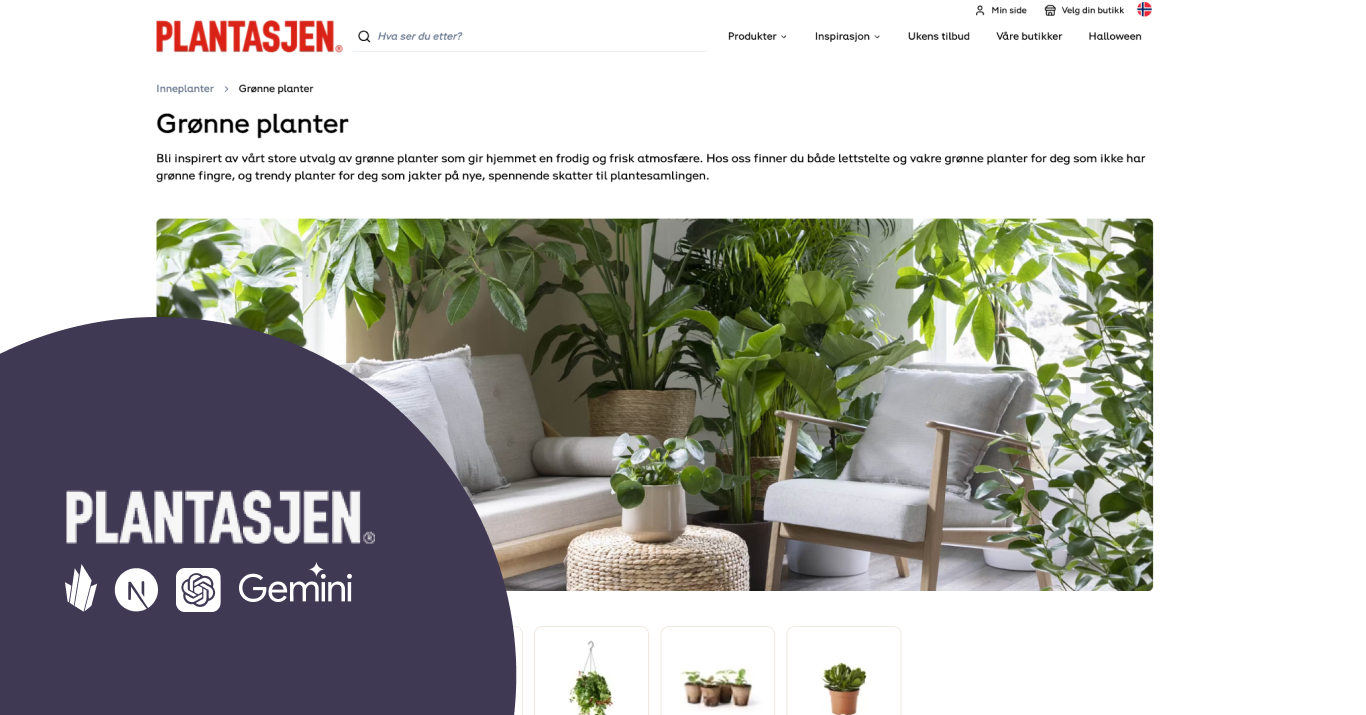Composable Commerce Needs Composable Content (Unify Content and Commerce with Crystallize)
Composable commerce without composable content is like a sports car missing its engine – you need both to accelerate ROI and stay future‑ready.

Composable commerce is a modular, API‑first way to build e‑commerce platforms. Instead of one monolithic system, businesses cherry‑pick best‑of‑breed components (search, cart, checkout, etc.) to meet their needs. This unlocks agility: teams can swap or upgrade pieces without rewriting the whole store.
However, this flexibility only pays off if the content layer is also decoupled and modular. That’s where composable content comes in.
Think of composable content like LEGOs for your online presence. You've got all these building blocks – text, images, videos, product info – and you can use them everywhere. They're stored in a headless CMS or PIM and accessed through an API, so whether it's your website, app, email, or even a smart speaker, your content is always ready to go.
Because it's all API-driven, everyone can get in on the action —editors, developers, and even AI! Forget about content being stuck on specific pages like with old-school CMSs. Composable systems treat content as data, so any frontend can easily piece it together.
The best part? You can reuse a product description or a banner graphic for a new campaign with just a quick API call. Easy peasy!
Agility, Speed‑to‑Market, and Personalization – Business Benefits
When content is modular, business teams can move at lightning speed. Marketers can launch new campaigns or microsites by just dragging and dropping existing content pieces, instead of waiting around for developers. Crystallize really champions this agility: our Product Universe – a unified PIM+CMS – means you get to market faster and tell your brand's story better, all without messing with your data.
Composable content is a personalization engine on steroids. By breaking content into granular pieces, businesses can send custom messages at every stage of the customer journey.
A composable content hub is your single source of truth, making omnichannel consistency a breeze. When product data, marketing copy, and media assets all live in one place, brand consistency naturally follows. This not only keeps your brand strong but also reduces errors – teams update a content block once, and boom, it's changed everywhere.
The agility you get from composable content translates into real wins. Teams launch updates faster, which means you see revenue sooner. Personalization boosts average order values and keeps customers coming back. And because headless systems connect via APIs, adding new tech or channels is totally plug-and-play – future innovations (like AR shopping or voice commerce) can just tap into the same content API.
With everything API-first and cloud-native, platforms can handle huge traffic (think holiday sales, new product launches) and changing needs (new channels, new business models like subscriptions) with minimal fuss.
In practice, that translates to ROI promised by composable commerce: personalization, fewer delays, less rework, and consistent messaging. It also means scaling globally or to new products with minimal friction.
Technical Foundations: Headless, APIs, and Microservices
So, what's powering composable content? It's all about the MACH tech stack: Microservices, API-first, Cloud-native, Headless. Essentially, each content type (such as product details, blog articles, or product descriptions) gets its own service, and all that data is shared via APIs. You've got a couple of ways to make this happen.
The Pain of Disconnected Systems
Forgive straight to the problem title here, but … many teams start by picking separate systems: a headless CMS (Contentful, Prismic, Storyblok, etc.) for content, and a commerce engine (CommerceTools, Shopify, etc.) for transactions – often with yet another PIM for product data.
Sounds modular on paper. In practice? It’s a tangle of sync jobs, API glue, and duct tape.
Connecting product catalogs from your PIM and CMS, hooking up a bunch of APIs, and teaching your team how to use different tools all add up. Take Commercetools, for example – they're awesome for flexible cart/order APIs and huge catalogs, but they need outside PIM connectors (like Akeneo, Pimcore, or inRiver) for product info. The same goes for Contentful; it's fantastic for modular content, but you still have to integrate it with a commerce backend.
This means when something slips, it’s your customer who notices first. Here are a couple of real-life scenarios of how it can play out:
- Marketing schedules a flash sale for a new bundle—only to find the CMS still references an old SKU. Result: broken links, angry clicks, and lost revenue.
- A localization update is made in the CMS, but the PIM doesn’t sync in time. Shoppers in France see prices in euros; the cart charges in dollars.
- Inventory updates lag between systems. Customers check out with out-of-stock items. Support tickets spike, reviews tank, and trust erodes.
- Developers race to fix data mismatches before peak traffic. Instead of building features, they’re writing middleware and hunting sync bugs.
And these aren’t edge cases. They’re the daily friction of disconnected systems. Every integration becomes a mini project. Every delay is lost revenue. And every workaround introduces risk.
When product information and content live separately, inconsistencies creep in. Separate tools often result in fragmented workflows. Marketers may update a CMS but forget to sync the PIM, leading to outdated product pages.
Unified PIM+CMS+Commerce with Crystallize
Going composable doesn’t have to mean juggling vendors, APIs, and integration timelines. Crystallize gives you the flexibility of modular architecture without the integration overhead.
You can define your entire Product Universe (all SKUs, variants, subscriptions, etc.) alongside marketing content and digital assets. All of this is delivered via blazing-fast GraphQL APIs and a global CDN for edge caching.
Product data, images, descriptions, blogs, and landing pages – it’s all in one schema. Content editors and product managers work in the same system, ensuring consistency. This eliminates the need to “push” data between platforms, so product launches or promotions go live instantly across channels. Customer data and catalogs stay in sync by design.

Crystallize was built “with developers and performance in mind,” offering a cloud-native, GraphQL-based backend and integration with CDNs. But also, Crystallize combines product information with rich marketing content…like no other platform on the market. This means marketers can build rich product pages (with text, media, and recommendations) using the same API that powers carts and orders.
Finally, with GraphQL, front-end developers fetch exactly what they need for each experience, resulting in faster page load times. The global CDN ensures content is delivered at great speed to any region. At the same time, Crystallize’s schema is highly flexible – you can model complex products (multi-tier variants, digital+physical bundles, subscriptions) without forcing one-size-fits-all models.
Comparisons: One System vs. Many
Headless CMS (Contentful, Storyblok, etc.) at the center of your stack. These platforms excel at breaking content into components, but they focus on site content. You’d still need to plug in a separate commerce engine and a PIM. That means more vendors, plus the risk of mismatched data schemas.
Headless Commerce (CommerceTools, Commerce Layer, Shopify) at the center of your stack. These provide a robust commerce API and catalog management, but by themselves, they’re “commerce only.” You’ll need to hook up a CMS for pages and a PIM for rich product info (for example, check CommerceTools’ marketplace of PIM connectors). Otherwise, your product descriptions and marketing assets live in different places.
Unified Platforms (Crystallize). Crystallize bridges those gaps. It offers the freedom of composable APIs and the simplicity of a single platform. There’s no need for complex 3‑way integrations. Crystallize’s PIM features are native, its CMS is built in, and commerce functions (cart, checkout, subscription management) are all under one roof. The upshot is lower TCO (fewer licenses and integrations) and faster project delivery, while still allowing you to swap out other parts of your stack if needed (you’re not locked into a monolith; you just get one at the right abstraction).
Examples. Contentful, a big-name headless CMS, helps teams manage, structure, and deliver content across any digital channel using APIs. It's fantastic for content creation and delivery, but usually, you'd use it alongside a separate commerce/PIM service. Crystallize, on the other hand, has a built-in commerce engine and PIM, so you get content and product data all in one place. That said, you could totally pair Contentful with something like commercetools, Shopify, or BigCommerce in a composable stack – the main thing is making sure those API connections are smooth. The big takeaway here is that any modern commerce setup really needs a content system that's API-first, headless, and super flexible, whether it's Crystallize, Contentful, commercetools, or something similar.
Composable Content Starts with How You Model It.
Composable content isn’t just about delivery APIs; it’s about how well your content is structured in the first place. That’s why Crystallize builds semantic modeling directly into the product layer – giving teams the flexibility to classify and enrich product data as modular building blocks from day one.
Take the Semantic Classification Bridge pattern. Instead of hardcoding attributes like “cotton” or “vegan” into each product, Crystallize lets you define shared content entities – like Material, Brand, or Allergen – as reusable documents. Each product simply references these documents, which can carry their own metadata, images, translations, or even compliance content.
For example:Cotton (Material) → referenced by → T-Shirt, Hoodie, Joggers
Update “Cotton” once (e.g. add a sustainability badge or region-specific label), and the change reflects across your entire catalog.
This modular approach to classification doesn’t just clean up your schema; it makes your product data inherently more composable, localized, and future-proof. One update powers many personalized experiences—without touching product shapes or developer pipelines.

ROI and Future Readiness
Content is the fuel of commerce, and in today’s fast‑moving market, you can’t afford static fuel in a turbocharged engine. Composable commerce promises speed and flexibility, but without composable content, it grinds to a halt.
By adopting composable content systems – headless, API‑driven content hubs like Crystallize (or Contentful plus commerce microservices) – businesses gain real ROI. You cut down development and maintenance costs, accelerate feature rollouts, and drive more revenue through better personalization and consistent brand experiences.
Crucially, this architecture is future‑proof: it flexes as new channels emerge and lets you swap in better services over time. In sum, investing in composable content is not just a technology decision; it’s a strategic one. It ensures your digital commerce is nimble, scalable, and ready to grow, delivering the ROI and innovation edge that decision-makers demand.
Curious how it works? Book a personal 1-on-1 demo to see your product data and marketing flow from a single source.
Explore🔎

Composable Architecture + AI: How Plantasjen Scaled Multi-Market Product Enrichment Without Growing the Team
A headless rebuild anchored on automation and machine intelligence enables fast, flexible, multilingual commerce at scale.

Breaking Free from Legacy Commerce: Your Roadmap to Headless Success
Switching to headless commerce is not a simple task. You’ll hit bumps along the way, from higher complexity to new workflows for your team. But the rewards make it worthwhile.

Content Modeling Step-by-Step Guide
Content modeling, how is it done? It's not as tricky as it sounds! It usually starts with some good old-fashioned brainstorming and planning, often in team workshops.

